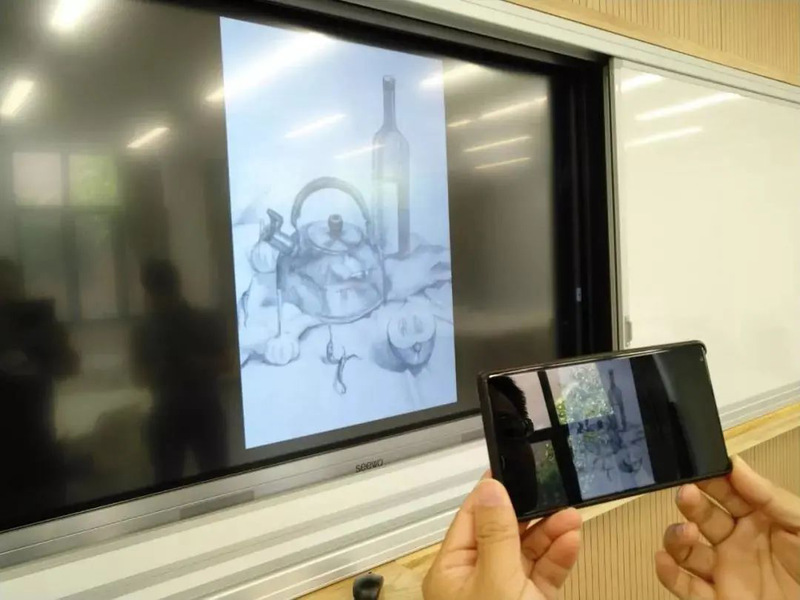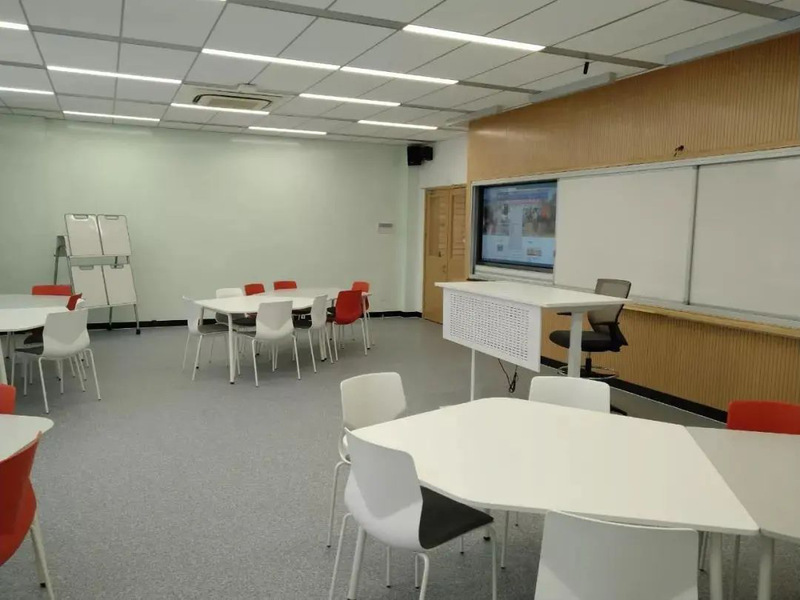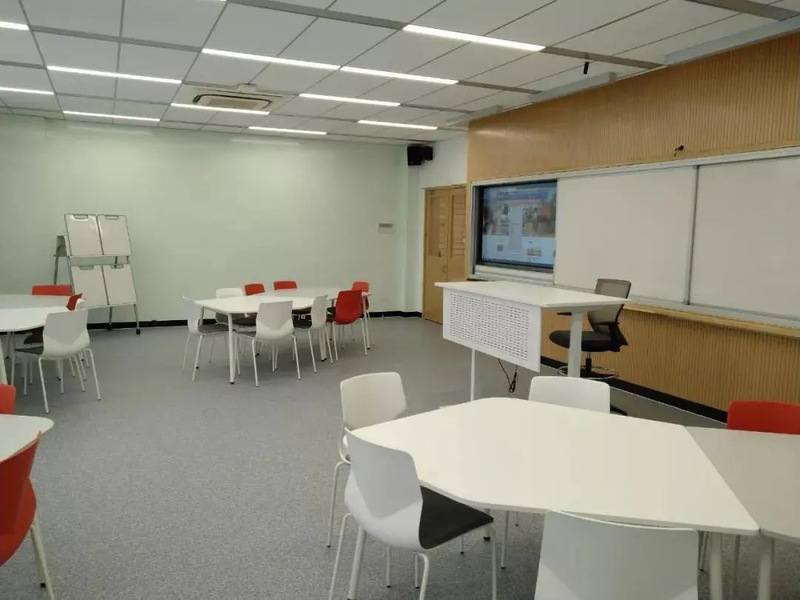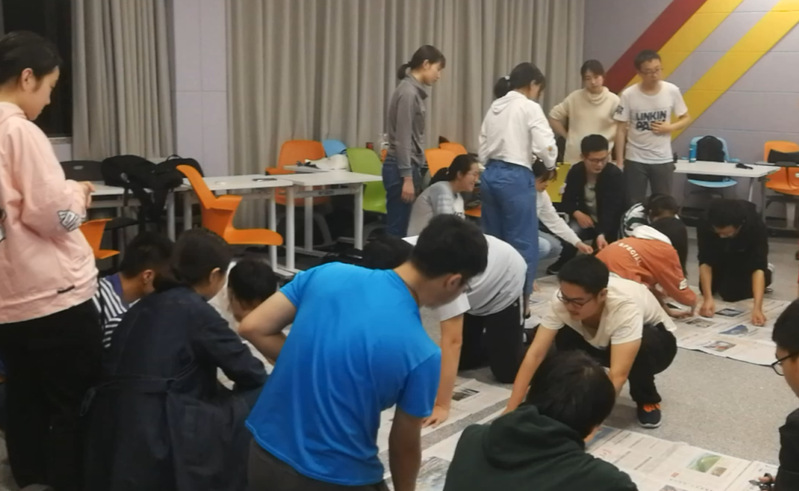Over the past years, the century-old institution of Fudan University has been renovating an array of old classrooms, introducing smart furniture such as adjustable desks and chairs, power outlets, touch-sensitive displays, writable walls, etc. To make more interactive experience to teaching and learning.
In a lecture of Advanced Mathematics at the No. 5 Teaching Building on Handan Campus, Qin Zhenyun, associate professor of mathematical sciences, was writing swiftly on her tablet, the digital screen behind her simultaneously displaying what she was writing.
Prof. Qin, now an experienced wireless projection user, no longer need to turn her backs toward the students while writing on the blackboard. “It helps me interact with students better, so they are more active to participate in the class,” said Prof. Qin.
The No. 5 Teaching Building where the education infrastructure was outdated and worn before the renovation, has nevertheless been frequently-used since 1985. “Our goal was to build a first-rate modern teaching building that boasts both intelligence and artistry,” a staffer in charge of the renovation said.
It is necessary for a top-notch university to offer outstanding learning environment, classroom management and educational service, and thus the notion of “upgrading public facilities to improve teaching and research environment” was proposed in the Fudan’s 13th five-year plan for 2016-2020.

Wireless projector
In 2018, the renovated No.5 Teaching Building debuted. This time all its classrooms have been equipped with projectors and touch screens. “Smart devices have reduced the sense of distance between teachers and us,” said a student from Qin’s class, as wireless projection takes away the fuss of fiddling with cables, keyboard and mouse and make the conversations smoother between teachers and students.
“Things on the projection display are more intelligible than those on the traditional blackboards, and I can see them clearly even seated at the back of the classroom,” said another student. “It’s also convenient to take notes.” The files on tablet can be exported and saved, which supports after-class reviews and discussions.
Dai Kaiyu, senior lecturer at the School of Computer Science and Technology, believes the best teaching setting should enhance the classroom experience of both the teacher and students. “The pivot of teaching should be the development of students’ abilities. By creating an environment where the teacher and students can easily share their opinions, we highlight the cultivation of comprehensive competence in students, and teachers and students can form a mutual-learning relationship.” said Dai.
The idea of building smart classrooms coincides with the teaching philosophy of Dai. “We can freely move and assemble the desks and chairs to meet the needs on various occasions such as seminars and lectures. To illustrate their ideas, students can move whiteboards to a spot easier for demonstration and open their files on electronic projectors,” said Dai. “This breaks the ‘teacher-centered’ way of teaching.”


Adjustable tables
Last year, Dai gave a lecture on Computational Thinking and Information Literacy (《计算思维与信息素养》) at the No.5 Teaching Building, and he was thinking about how to illustrate the abstract concept of complex systems, in a more graphic way.
Then Ye, a student from the School of Management and a cellist in his spare time, drew an analogy between the relationship of complex systems and emergence and that of musical notes and melodies.

Students at Dai’s class
In the next class, Dai changed the classroom setups and transformed the classroom into a tiny theatre. As Ye played the instrument, he said, “A single note can’t create a melody. Only when multiple notes are connected incessantly can we recognize the flow of music. Emergence is a phenomenon resulting from the connection of individual components, and but any one of individual components can’t reflect the characteristics of the unity.”
“Learning has a lot to do with the environment. Smart classrooms make it possible for us to freely express and exchange opinions in a teaching environment that the teacher and students see most fit,” said Dai. A favorable environment actually helps students to make expressing and exchanging ideas their long-term habit.
Since fall 2017, 124 smart classrooms on Fudan’s campuses have been renovated or built from the start. They are only a part of the university’s efforts in upgrading the infrastructures to create an ecosystem of teaching which puts students first. In the future, more facilities, such as gyms, labs, library databases, will also be upgraded to better serve the students and faculty.


